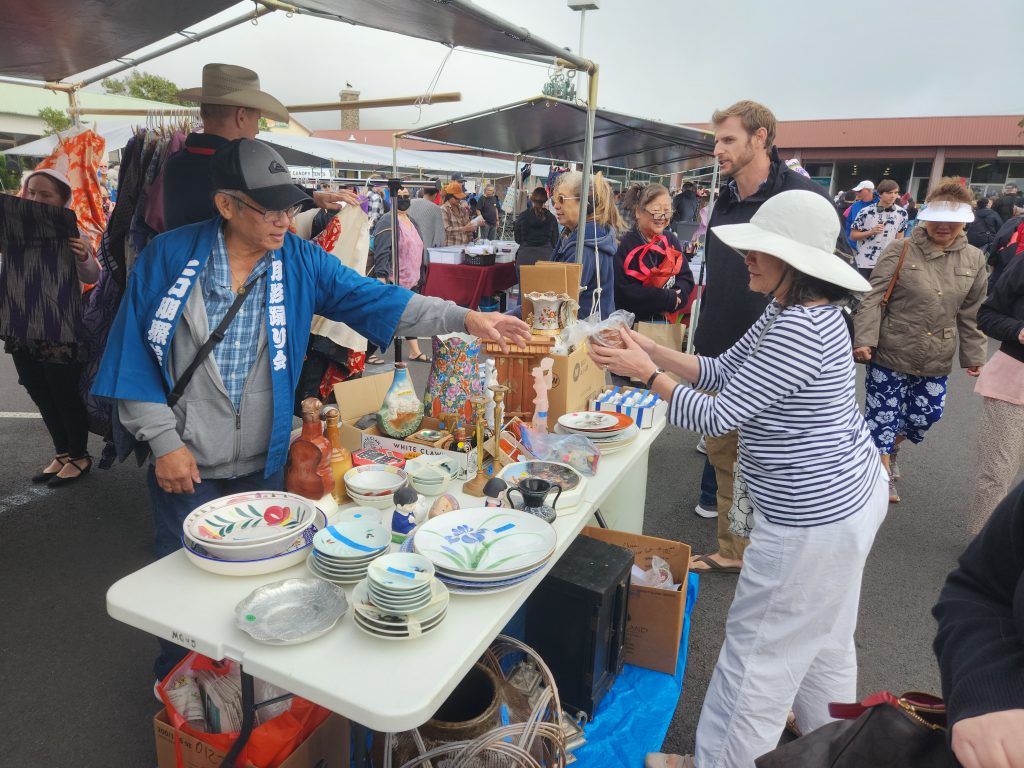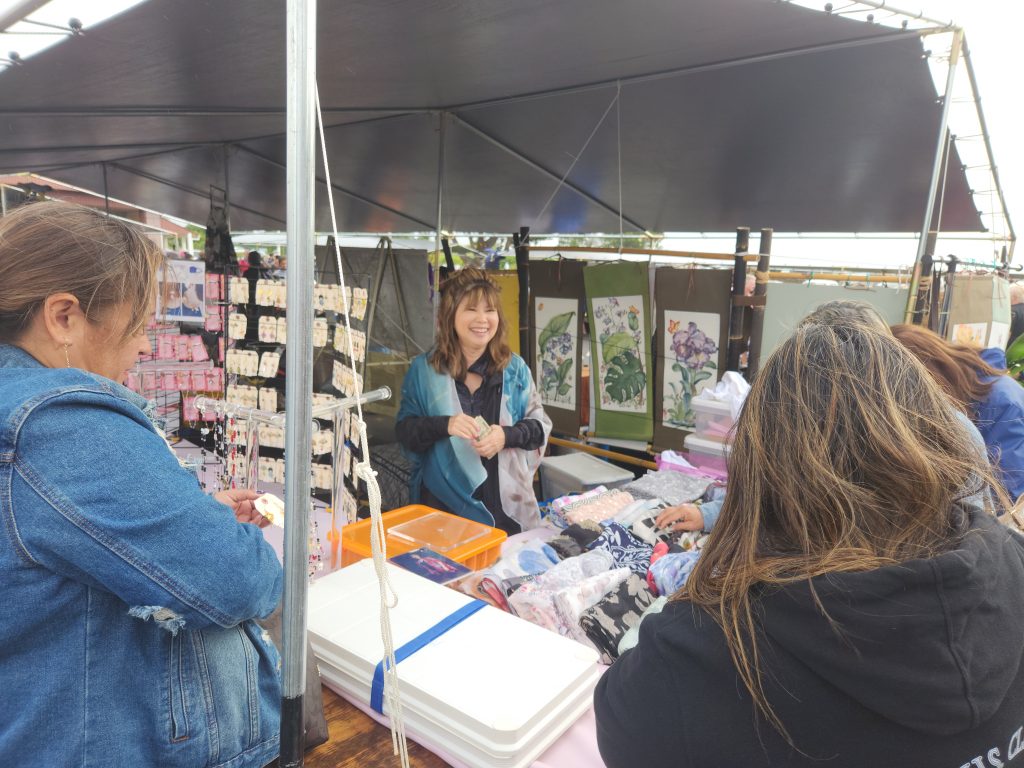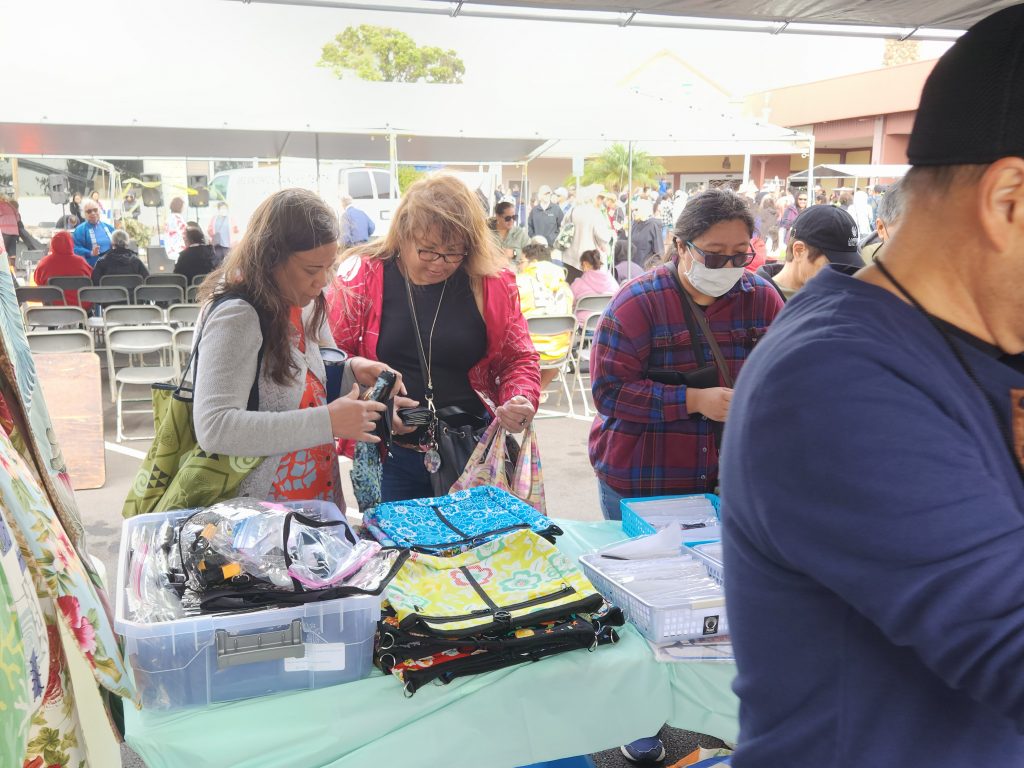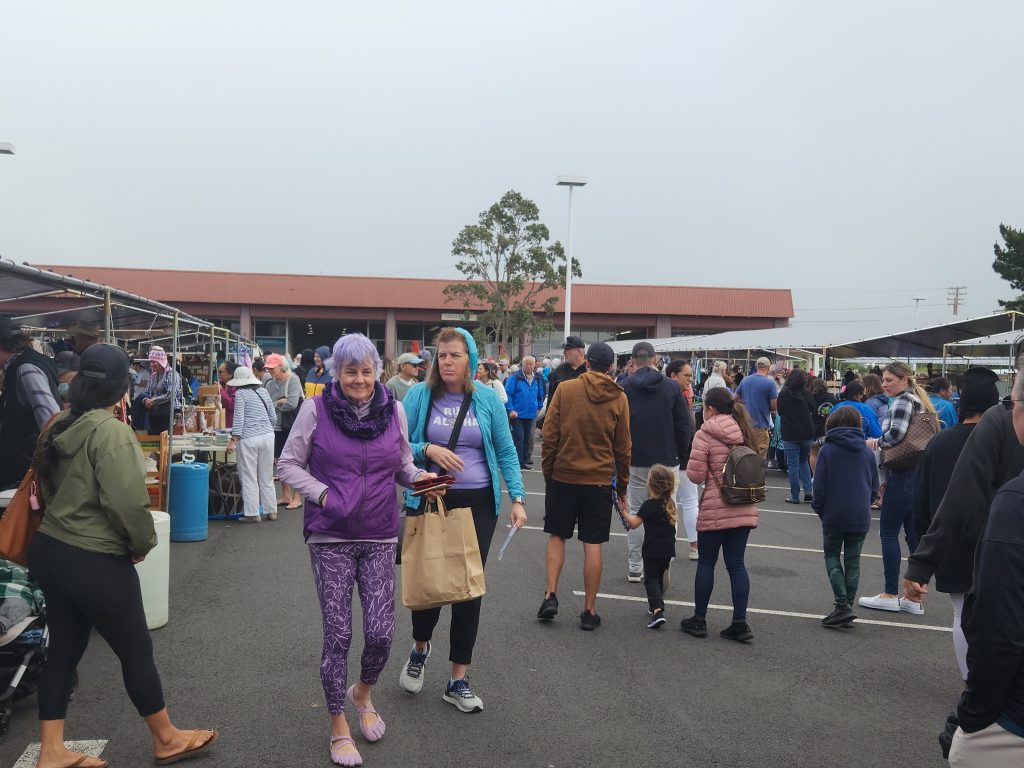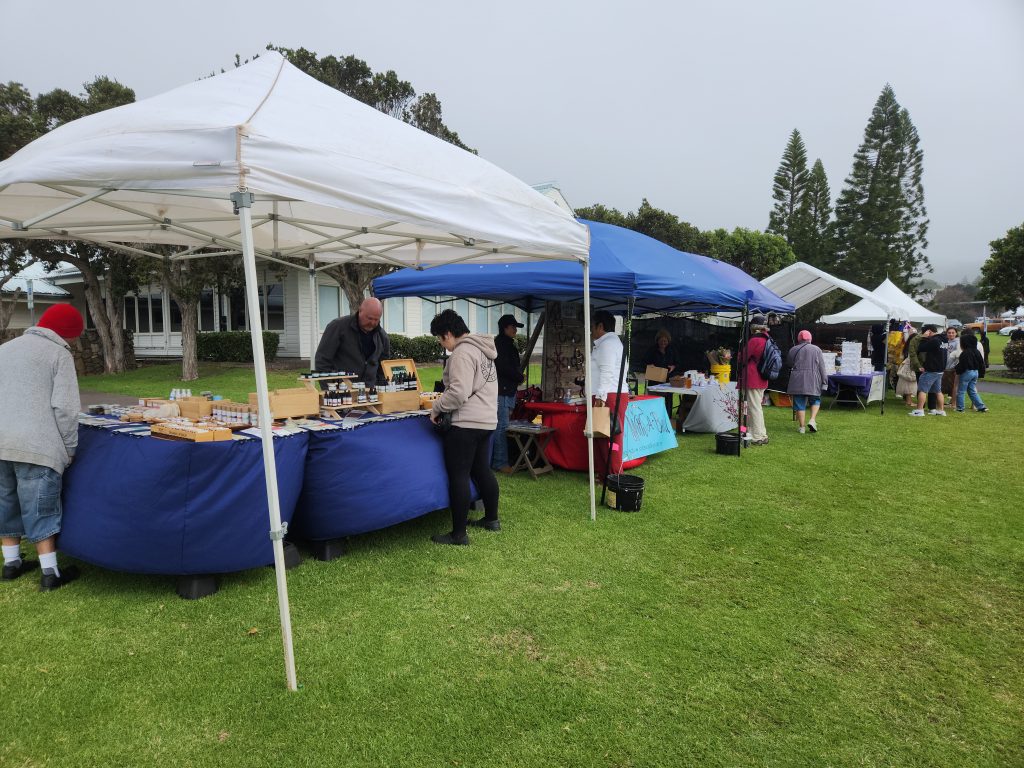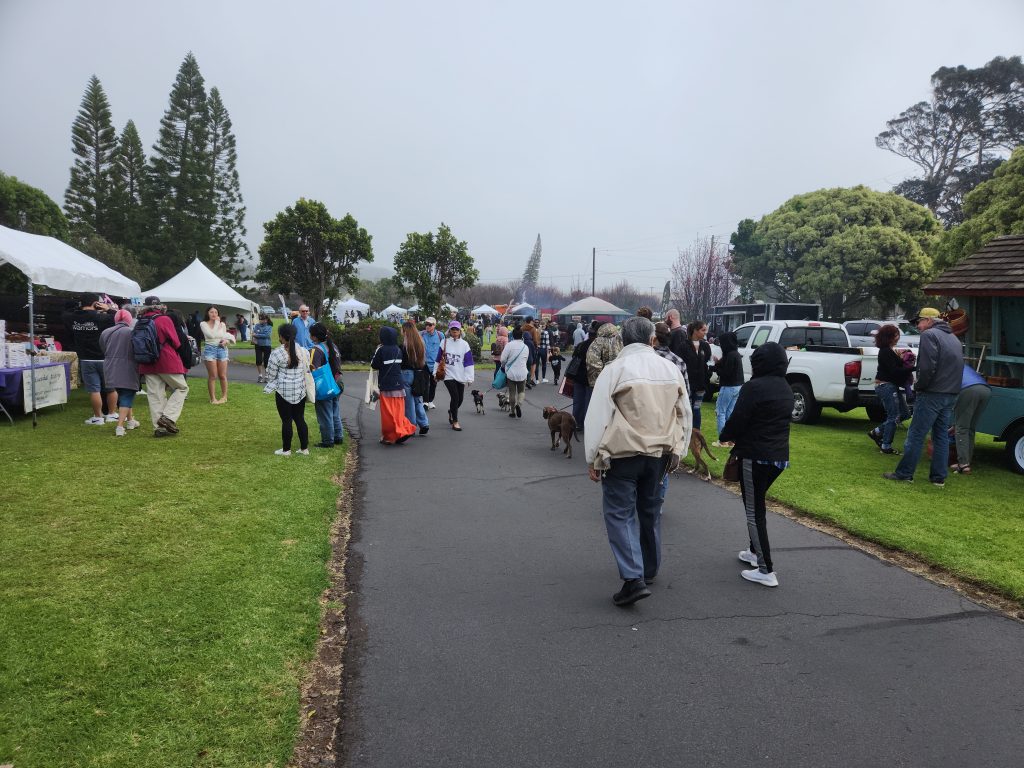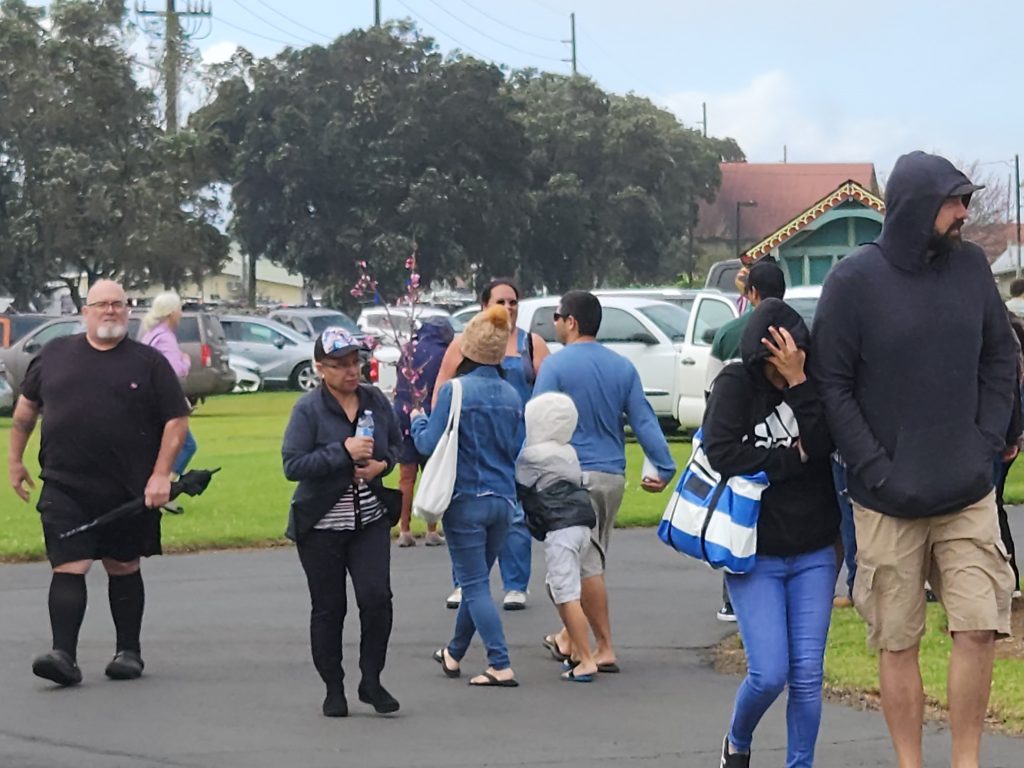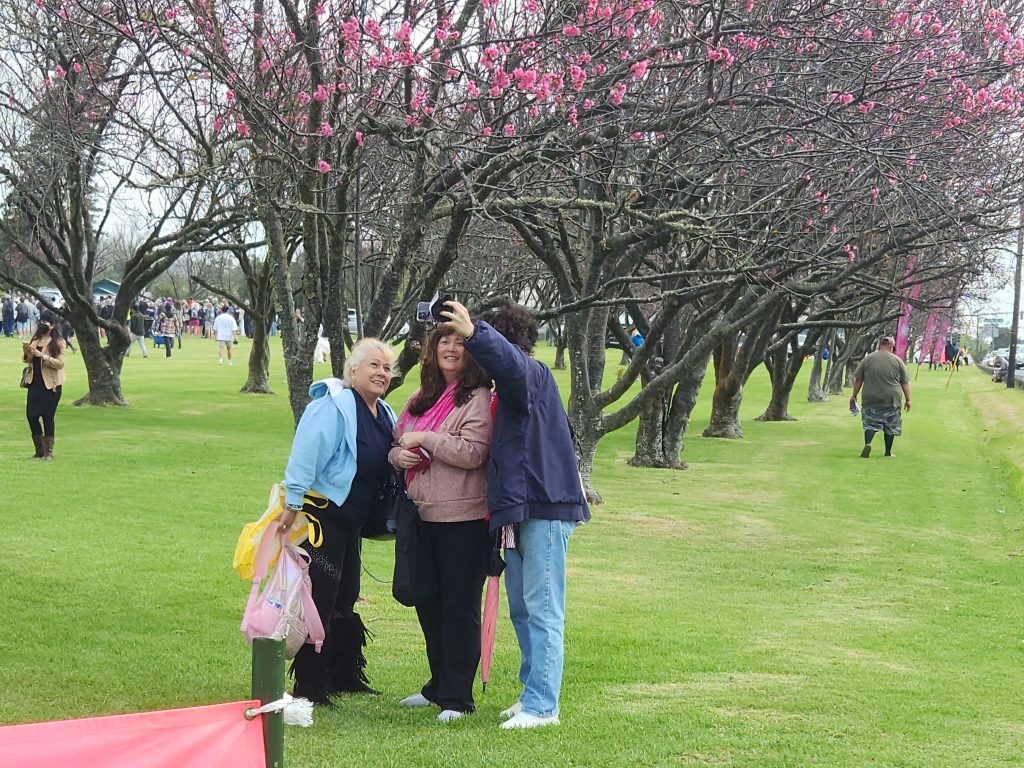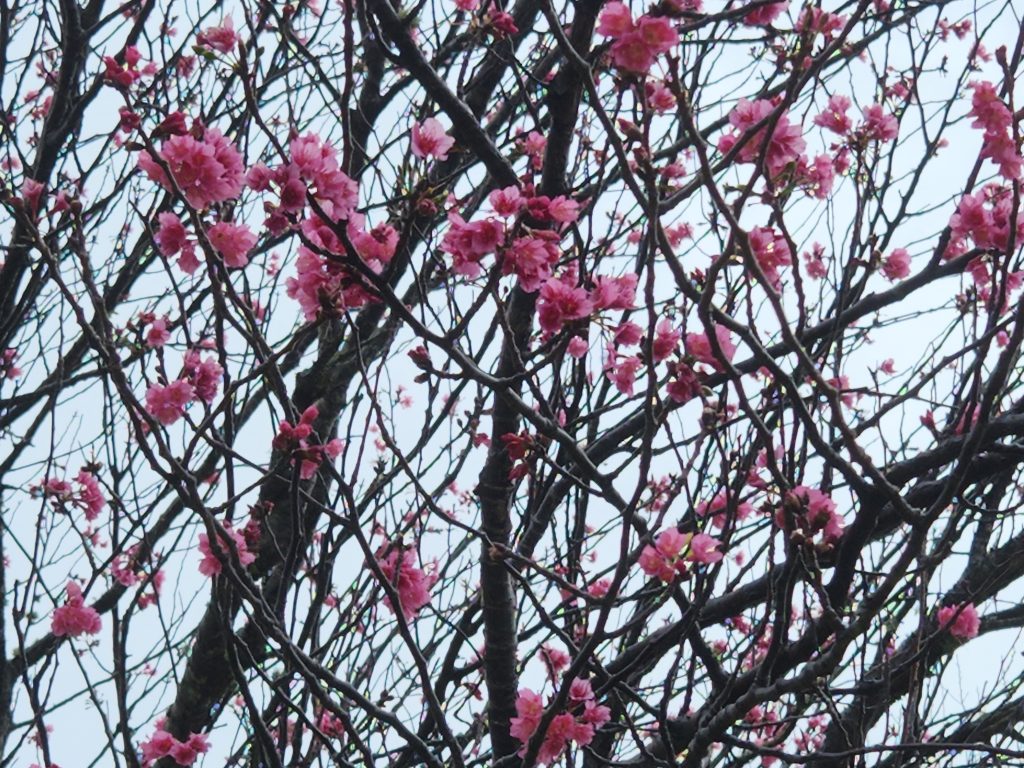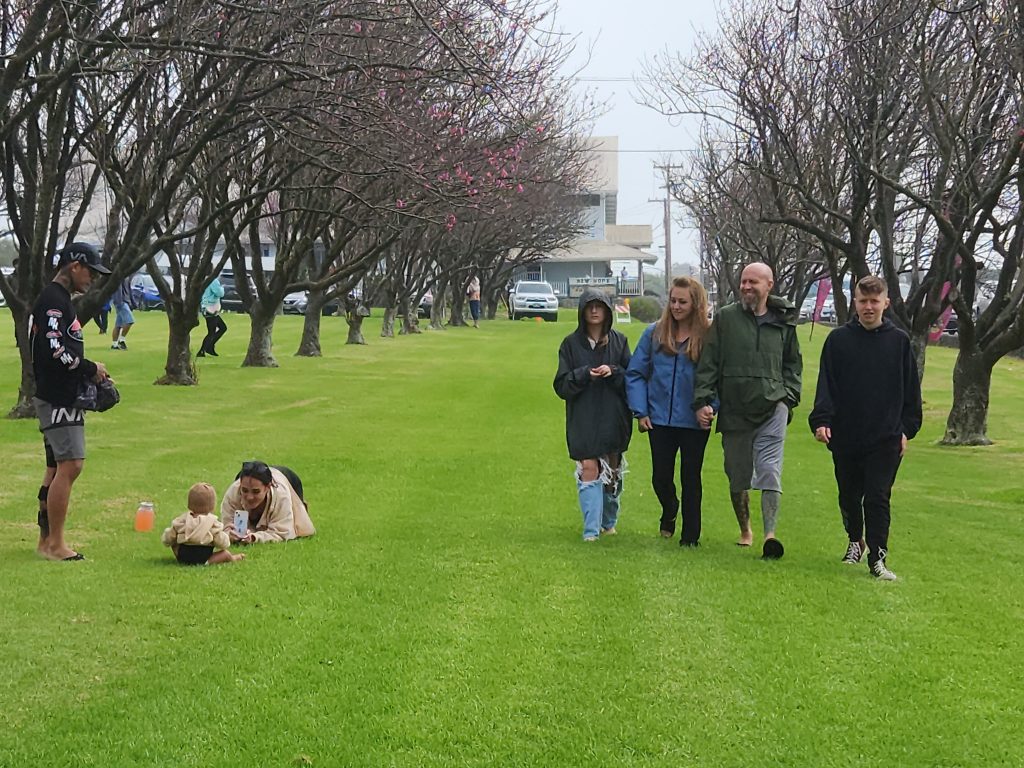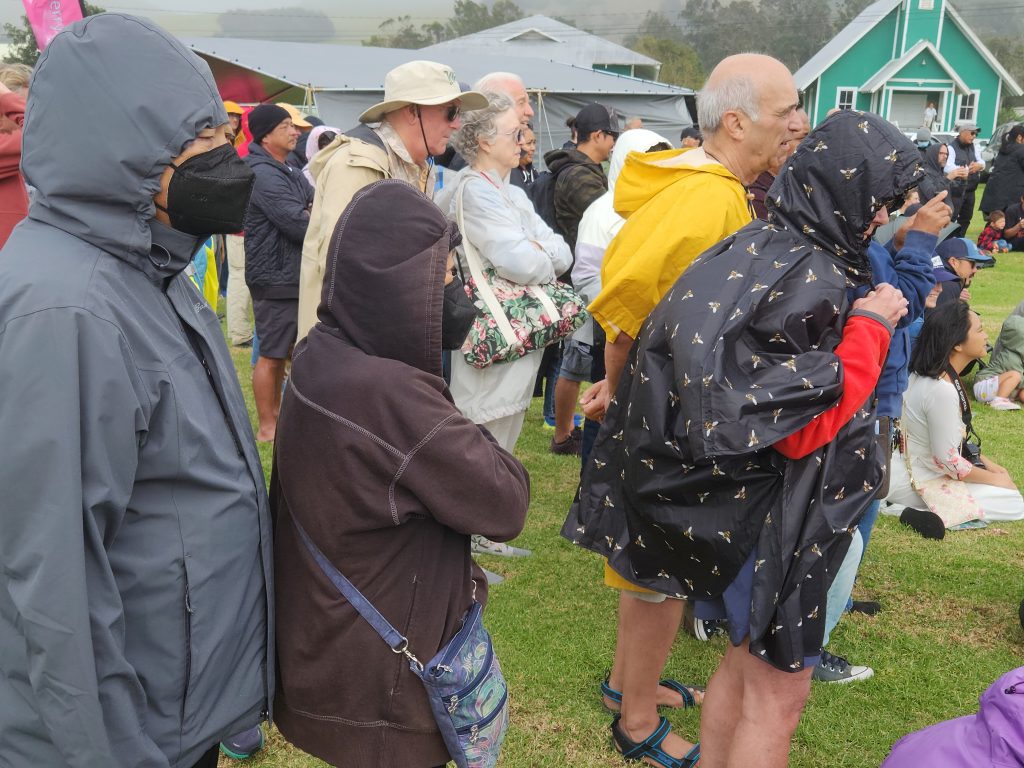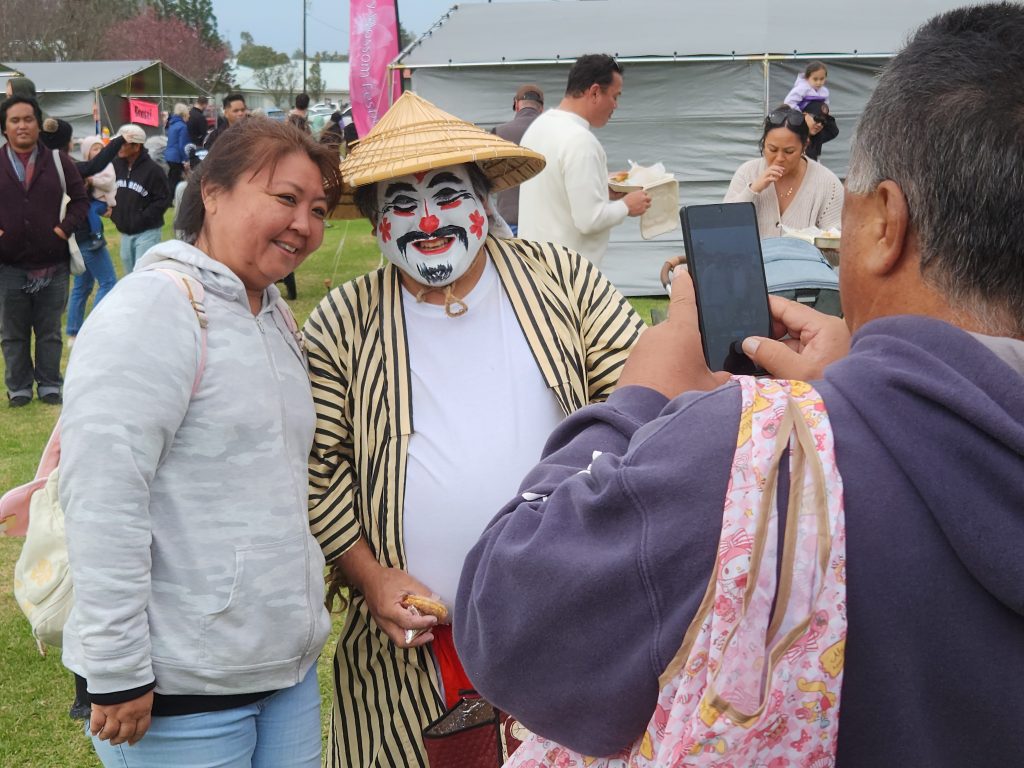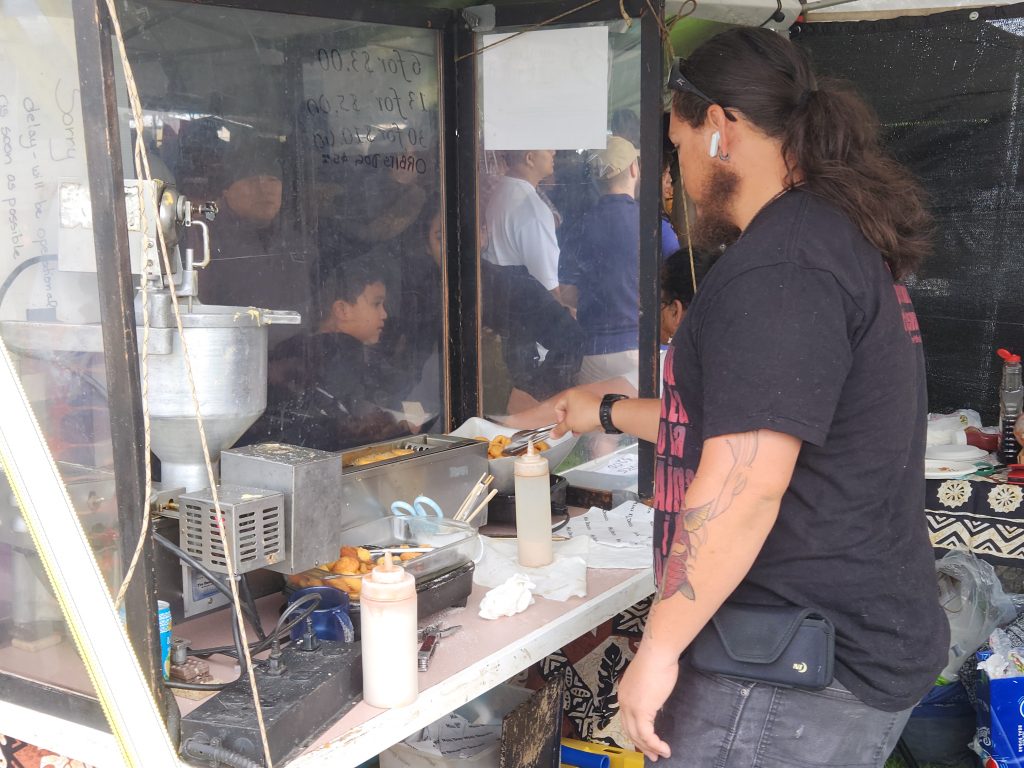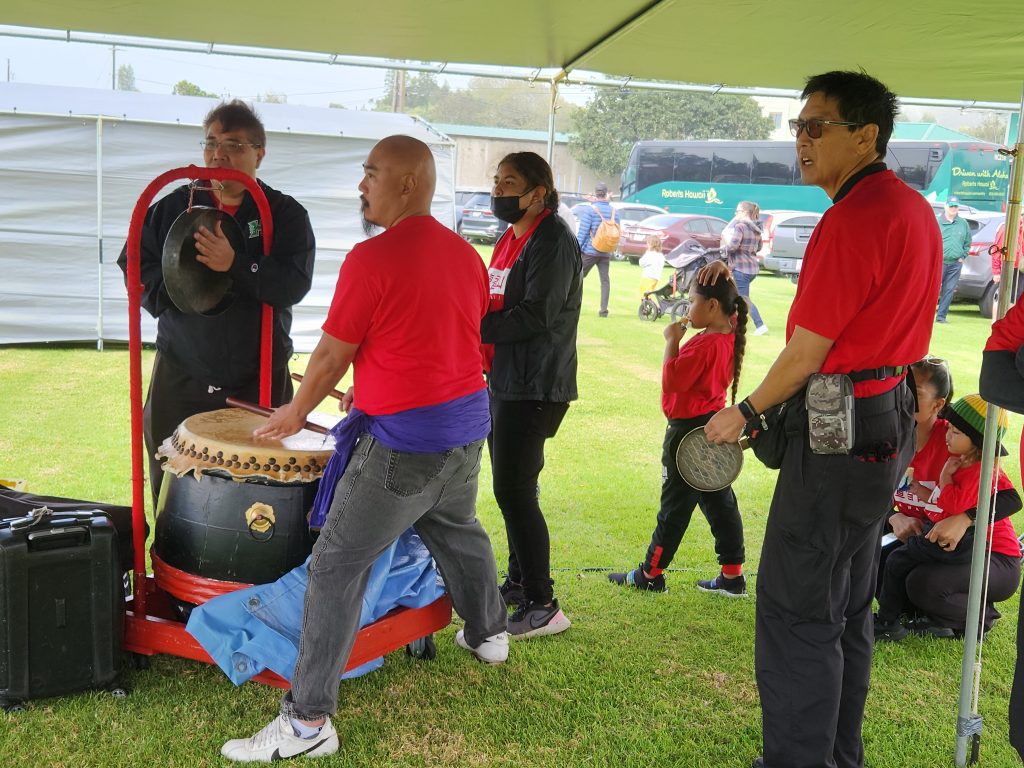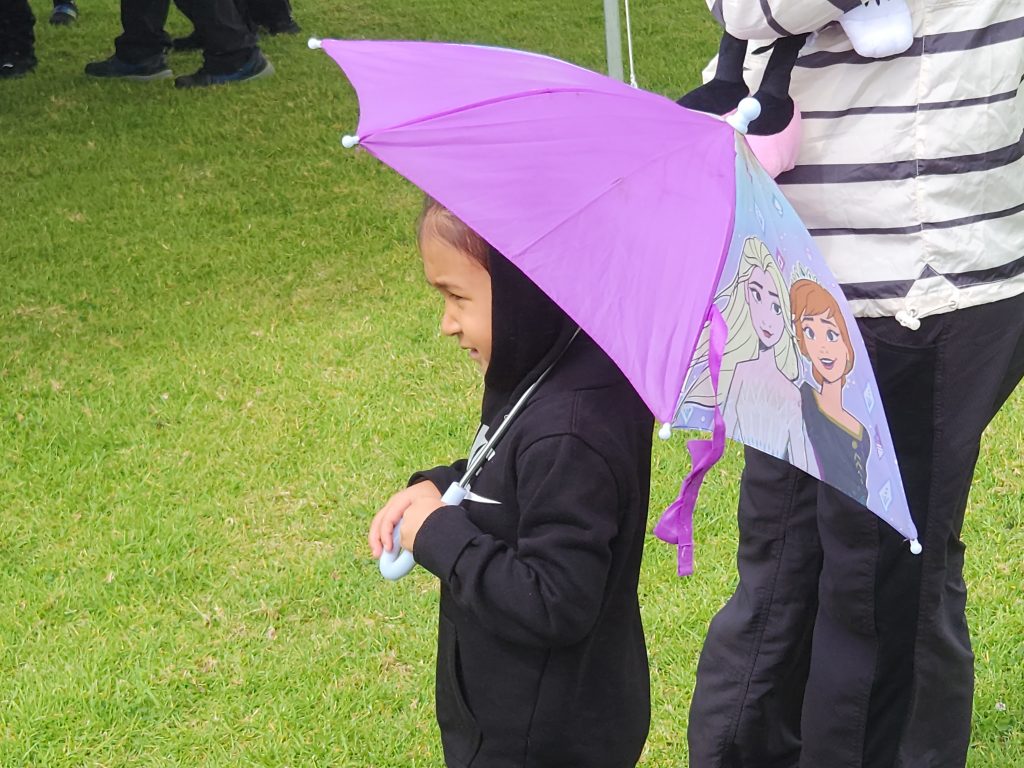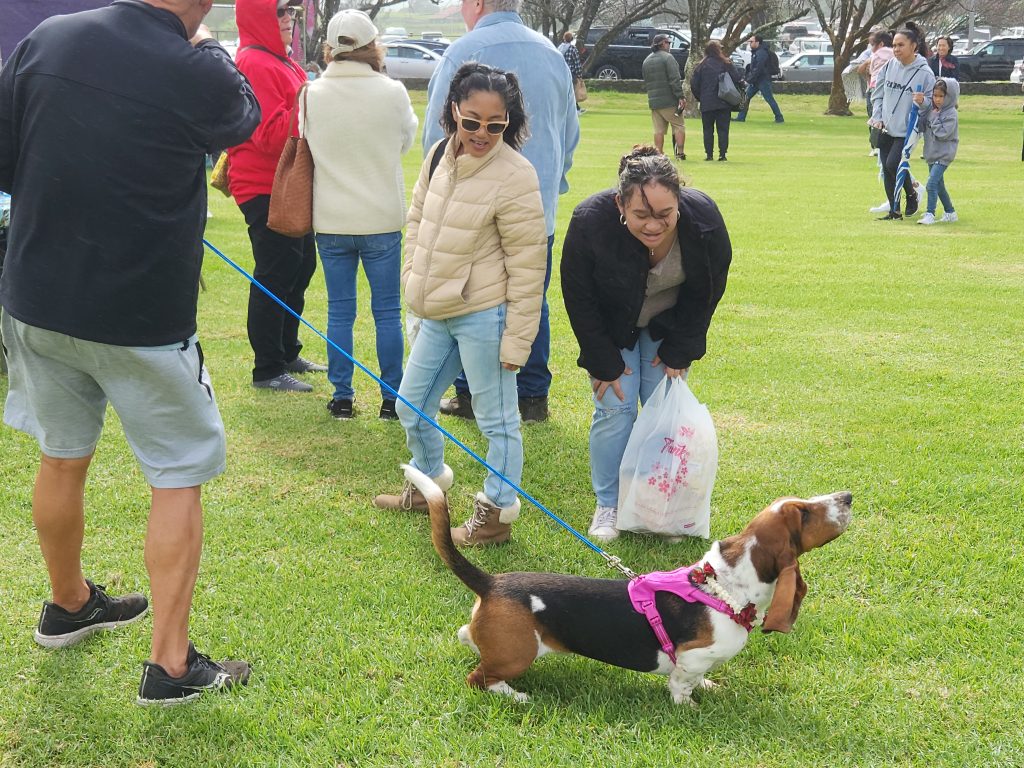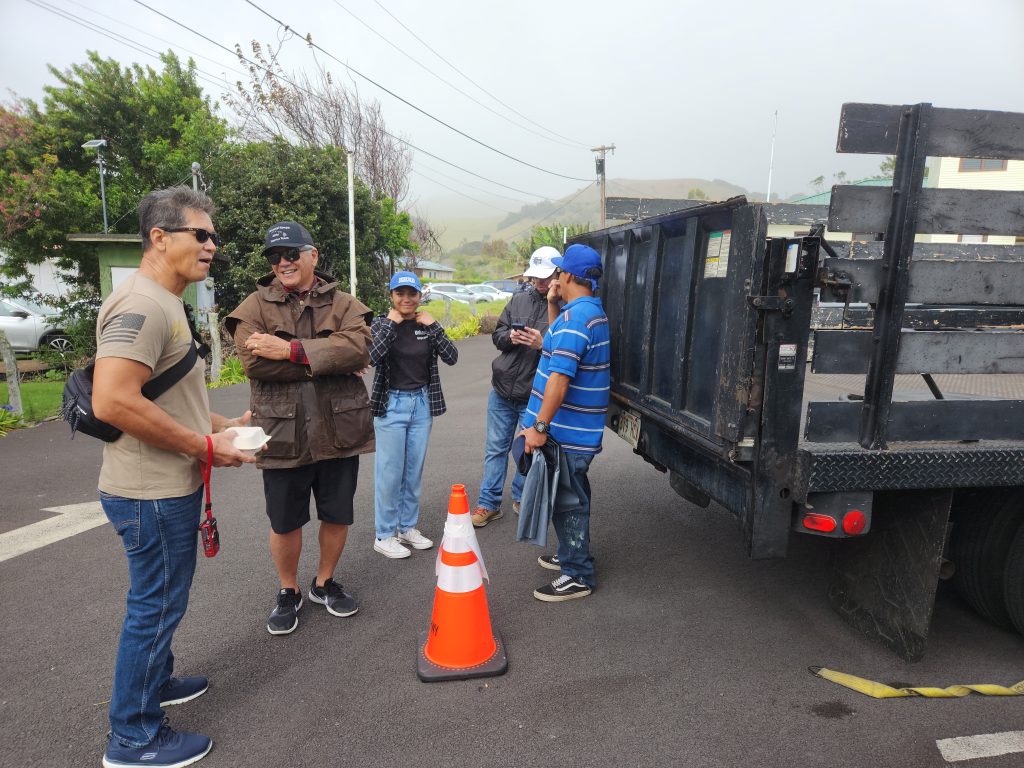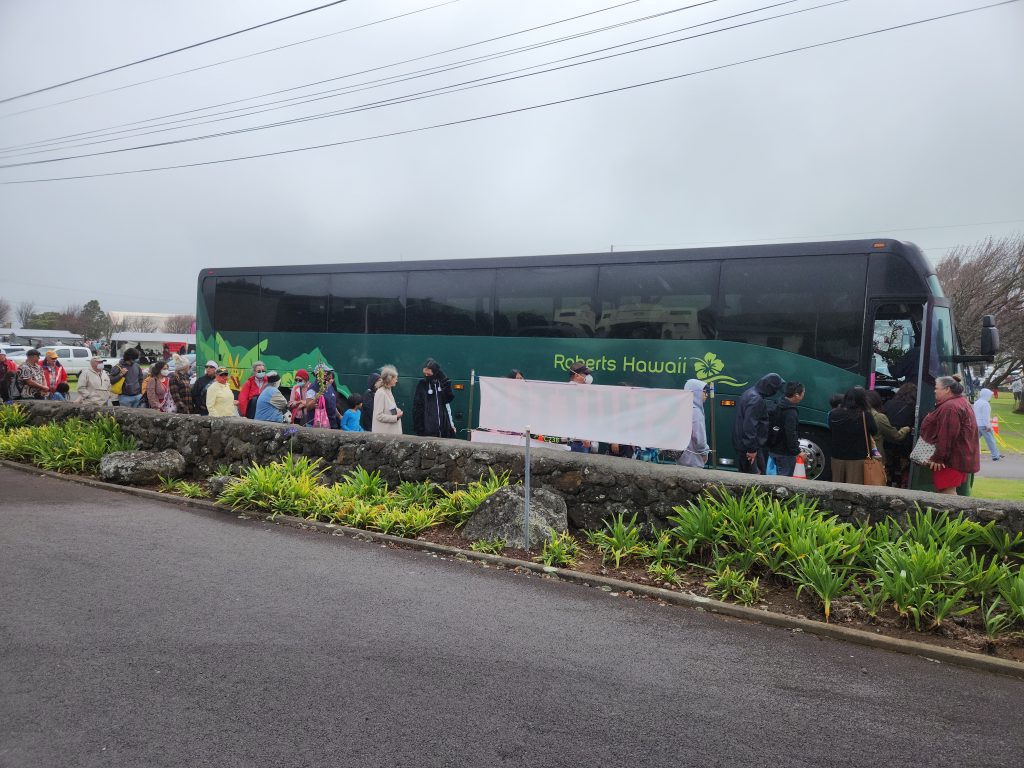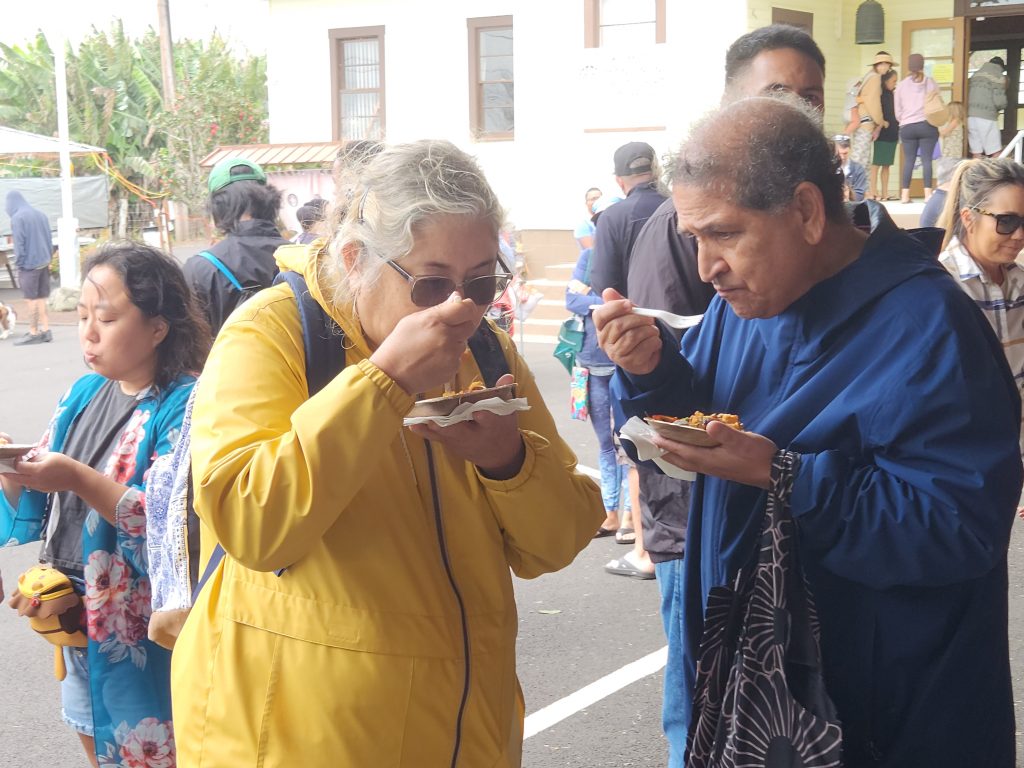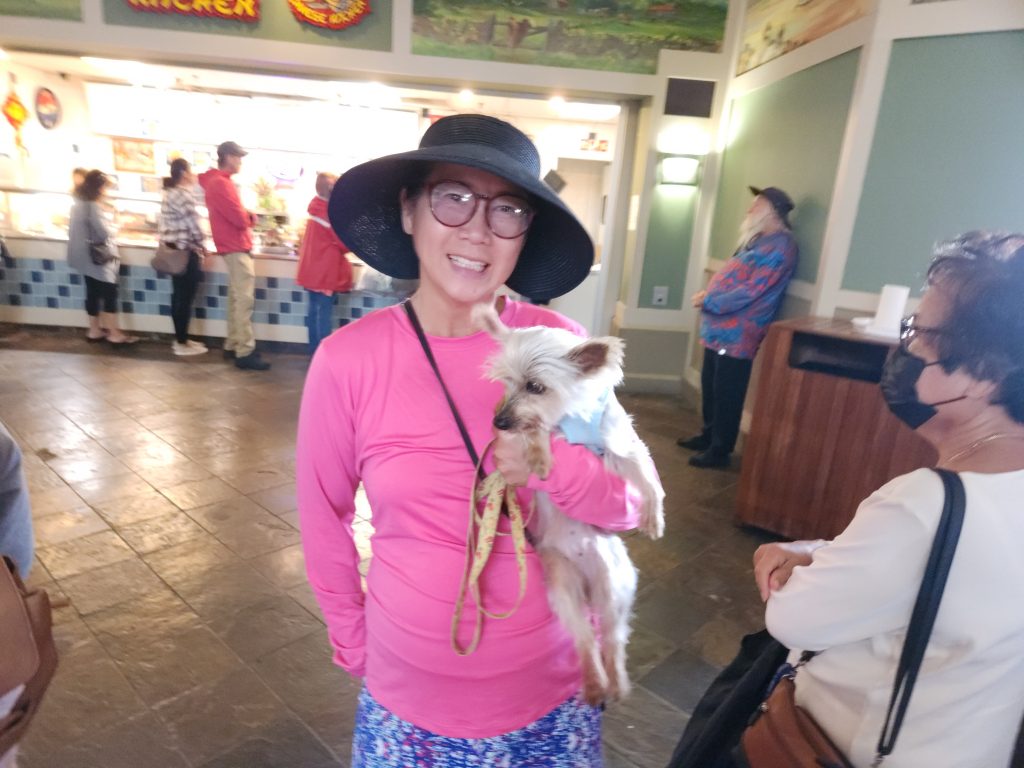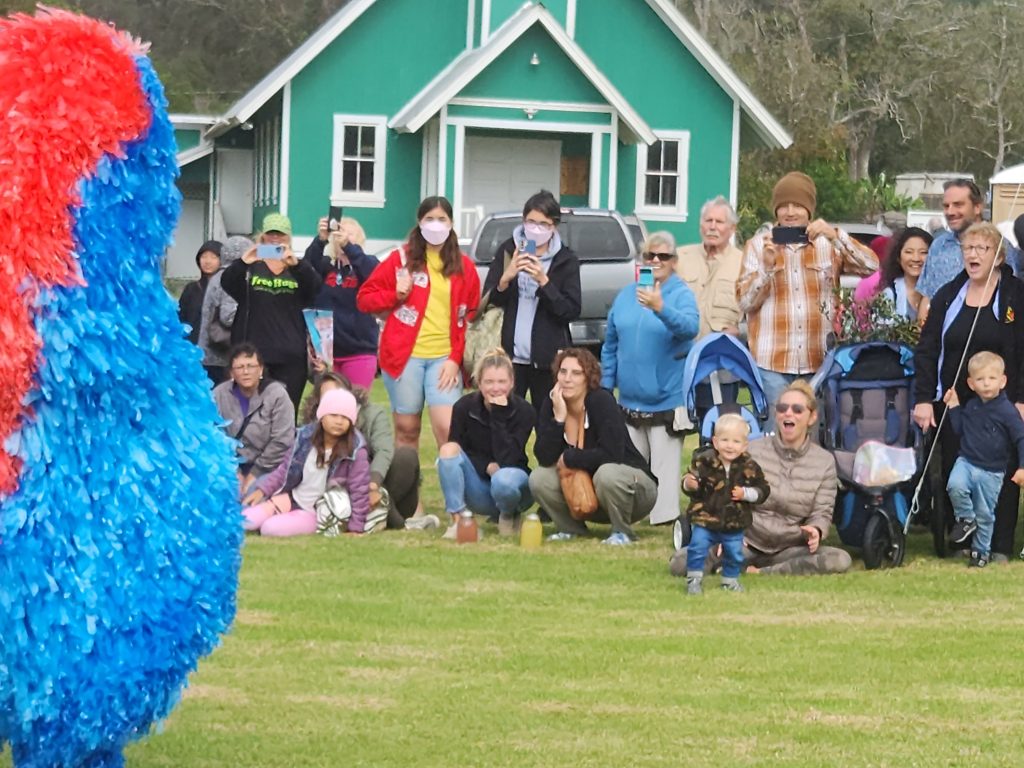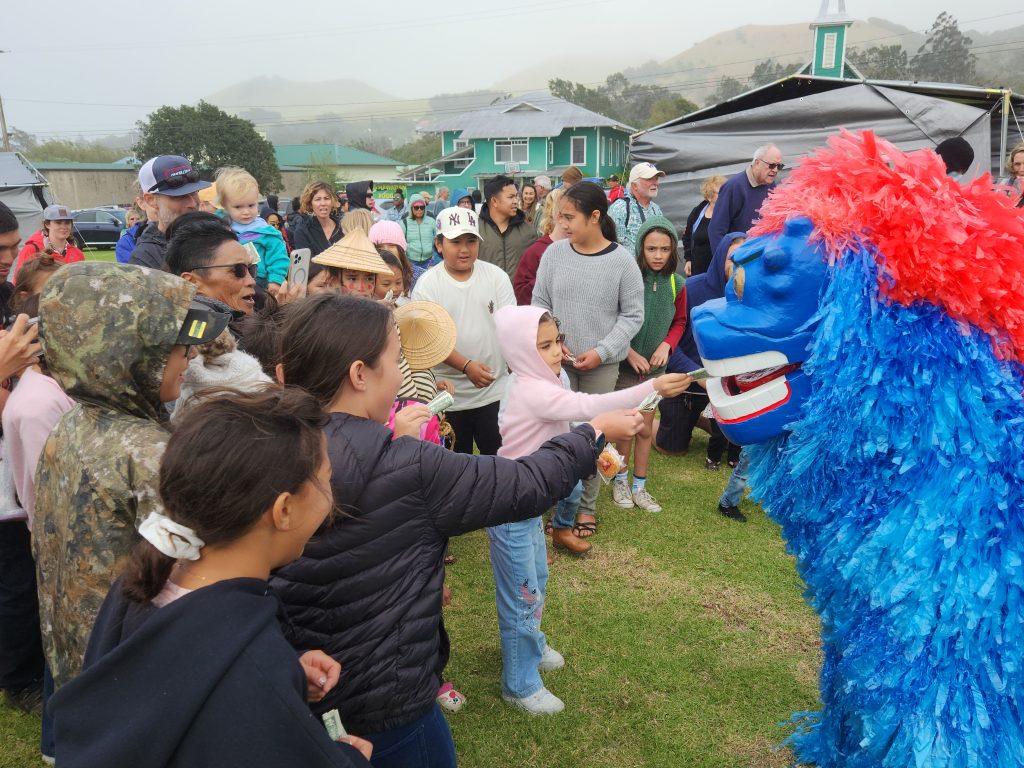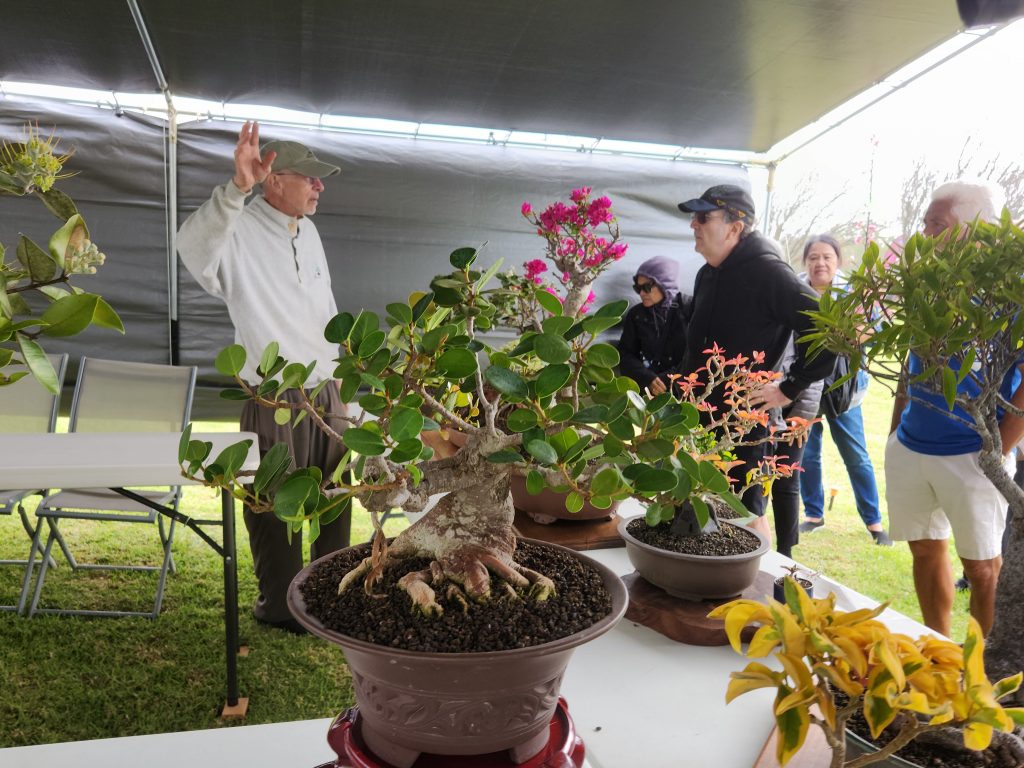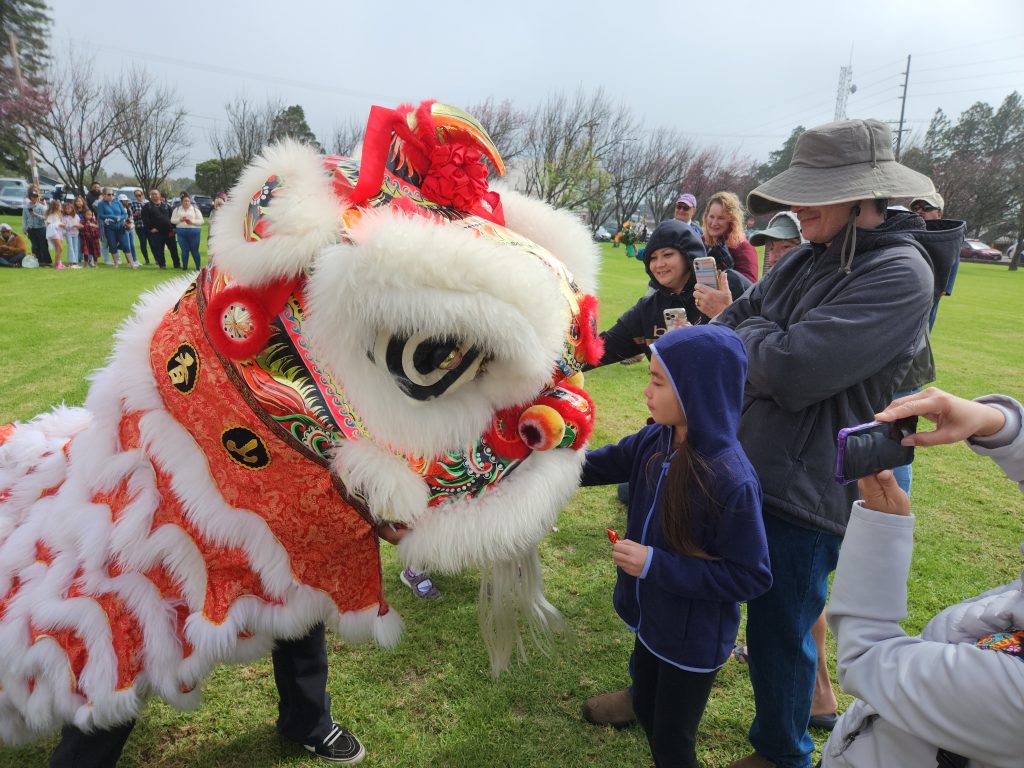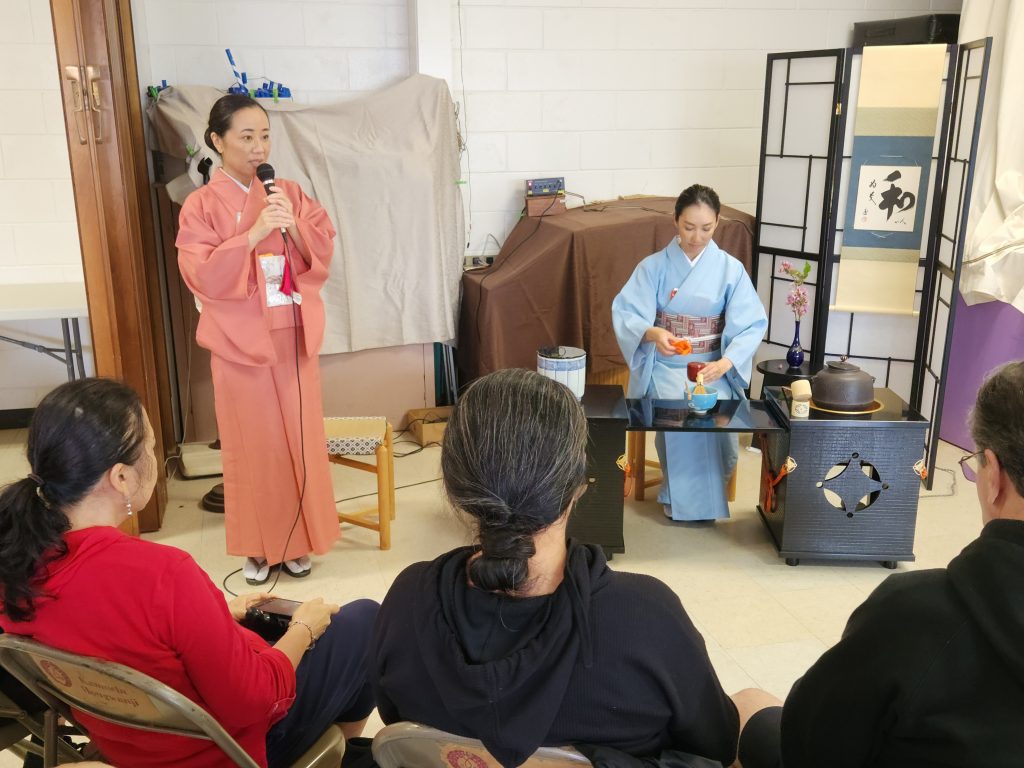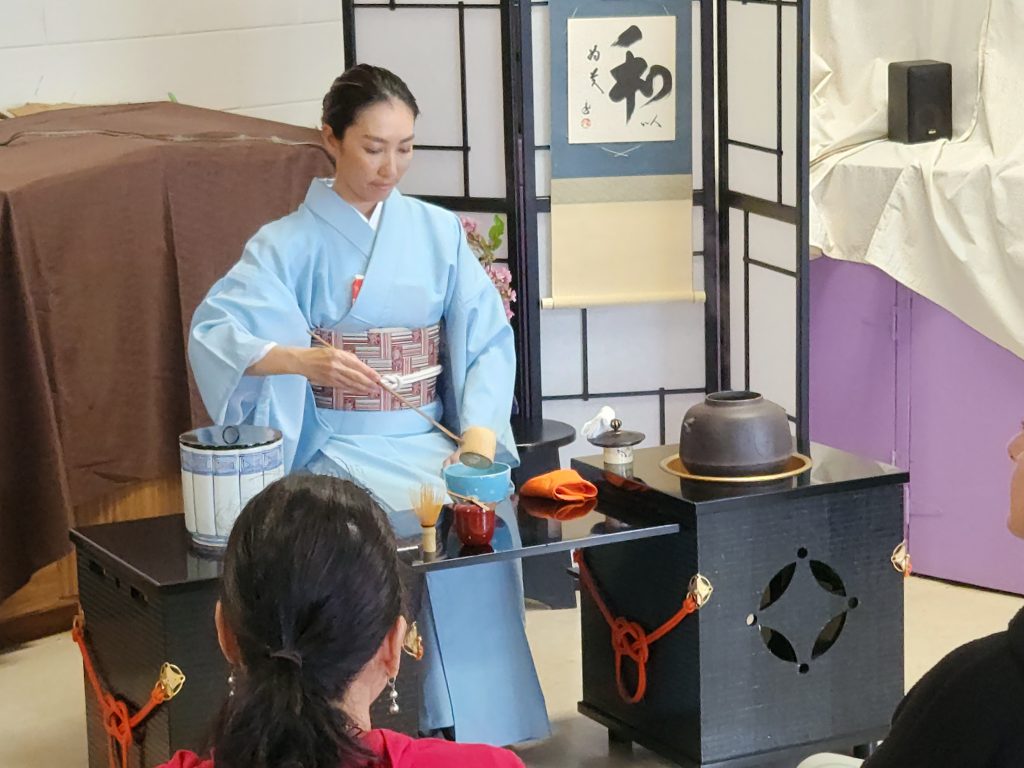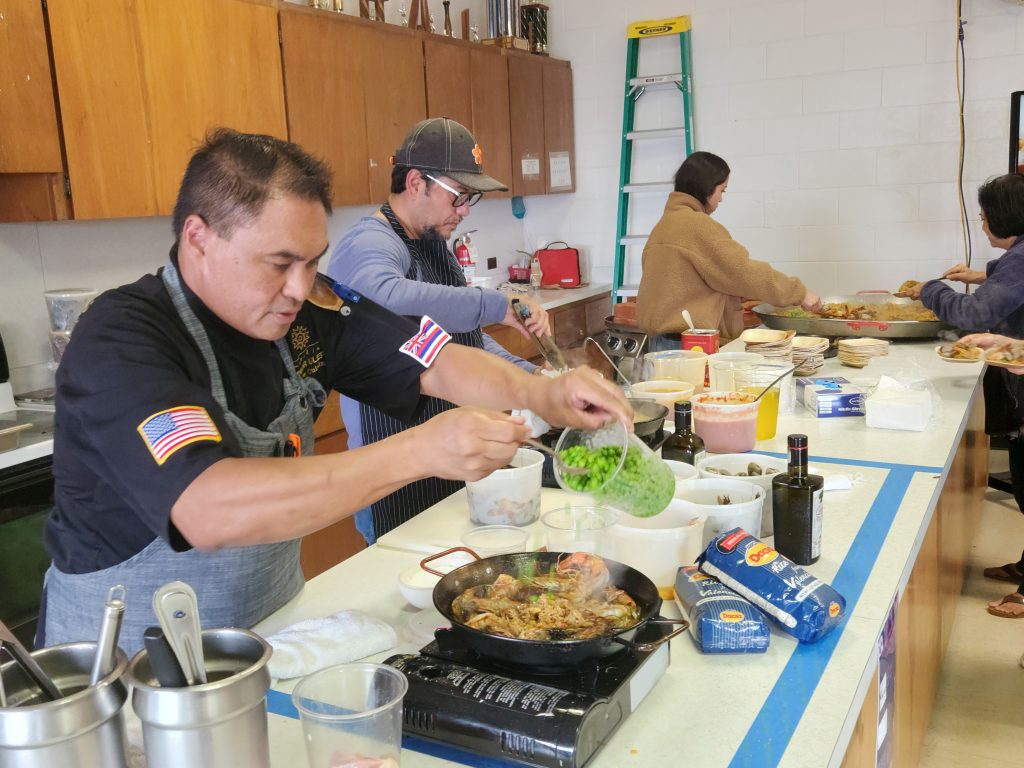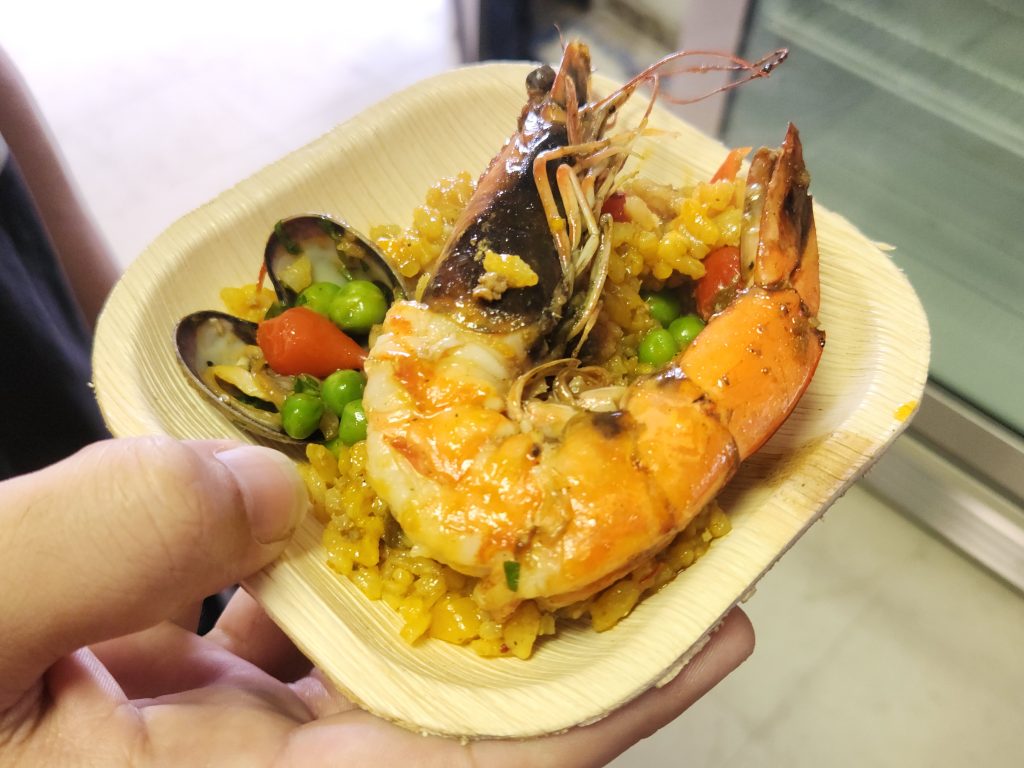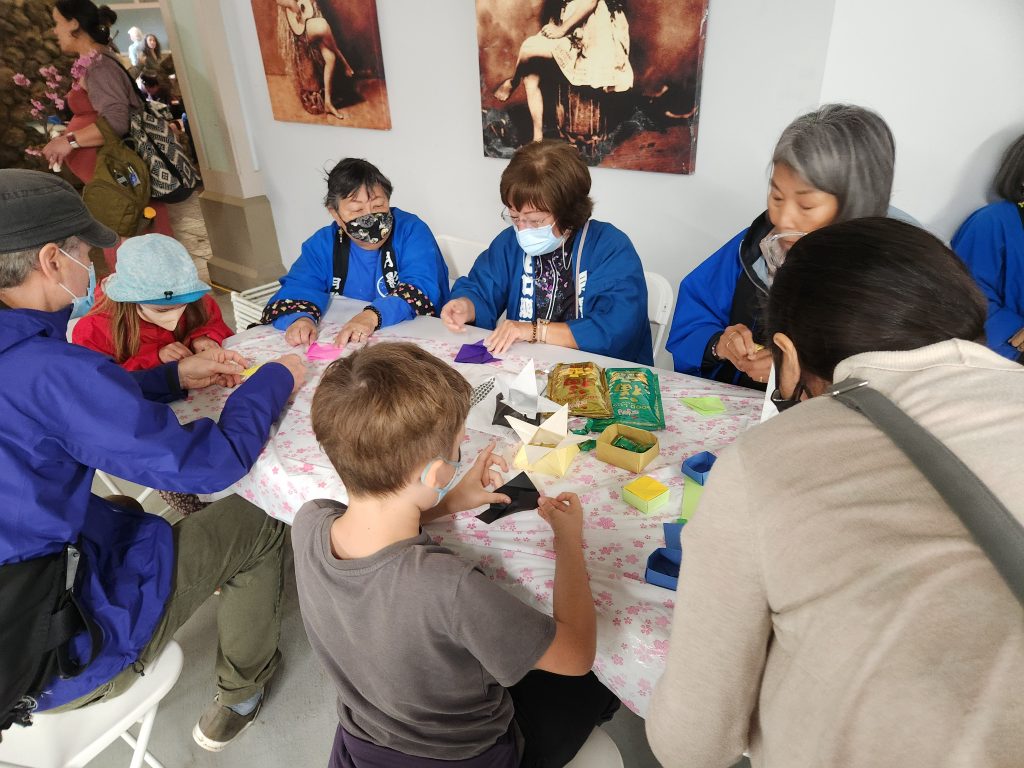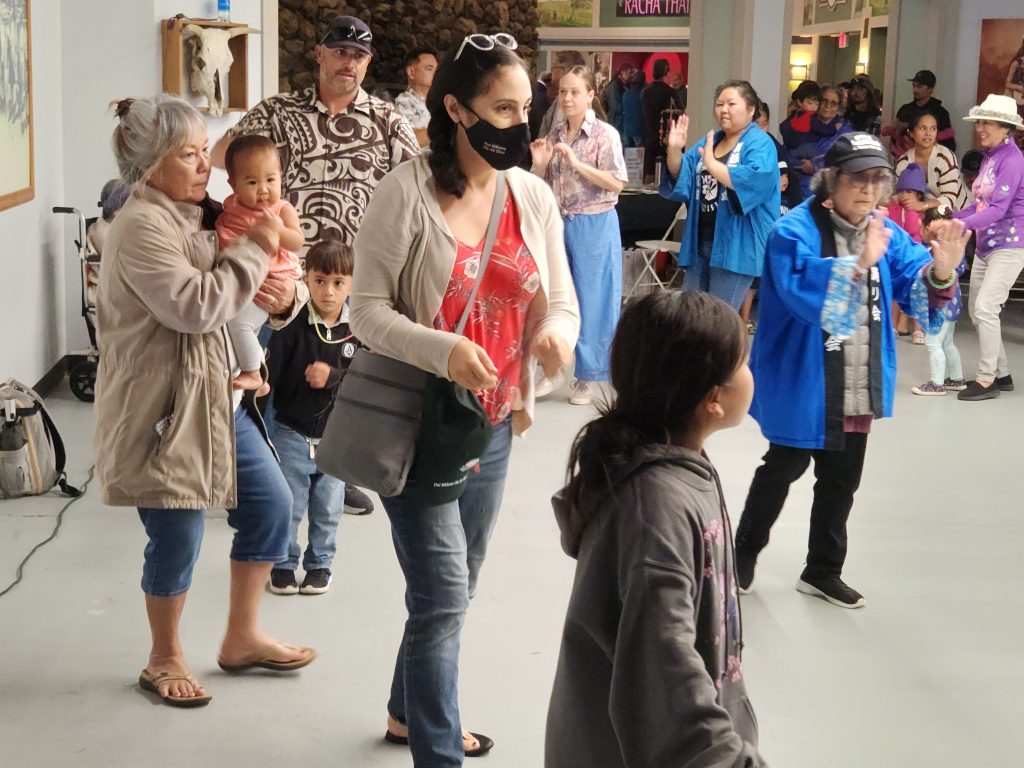Waimea Cherry Blossom Heritage Festival celebrated 30 years and Japanese culture

Since I moved to the Big Island nine years ago, I’ve always wanted to go to the Waimea Cherry Blossom Heritage Festival. Life always got in the way until Saturday.
It was finally time to “Think pink.”
I wasn’t the only one either; thousands of people had the same idea. I don’t know if I’d ever seen Waimea so busy in February. Finding parking was a struggle and traffic was crazy. There were so many people that a second smaller Roberts Hawai‘i bus had to join its full-size tour bus fleet mate to meet the demand of festival-goers wanting to be shuttled the half mile between Parker Ranch Center and Church Row Park, the two main sites of all the activities.
Many of the 75 or so cherry trees all lined up in rows at Church Row Park had bloomed earlier, their beautiful blossoms gone. But there were still more than enough of the sweet-smelling sakura (Japanese for cherry blossom) hanging on Saturday to be the stars of the show.
In all of their deep pink glory, the remaining blossoms became the subject of many a family photo and selfie or a backdrop for reuniting friends.
The blossoms, which last for about one to two weeks after blooming, are the reason for the festival after all. They have mesmerized people with their beauty since the first three were planted at Church Row Park in the early 1950s.
The festival marked its 30th anniversary this year, returning in person after a two-year hiatus because of the COVID-19 pandemic. The annual event is normally held the first weekend of February. It began in 1994 and brought the Japanese tradition of hanami, which combines the Japanese words “hana,” or flower, and “mi,” or look, to the Big Island. Hanami celebrates the fleeting beauty of nature and arrival of spring.
It didn’t matter that the brisk wind stampeding through Waimea town kept trying to blow my hat away. It didn’t matter that it was still a chilly 67 degrees Fahrenheit at 1 p.m. as thick clouds hovered low over the Kohala Mountains and obscured the view of Maunakea. It didn’t matter that a thick mist caked my glasses as I walked through the venues, making my clothes a little damp at the same time. It was one of those moments I seriously could have used tiny windshield wipers on my glasses a couple of times.
None of that dampened my spirits or those of the thousands of people, young and old, at the festival.
Accompanying the delicate cherry blossoms were myriad interactive events, demonstrations, games, tours, vendors, crafts and just about everything in between highlighting Japanese traditions and heritage. There was so much to do that myself and two friends couldn’t make it to everything, but we tried.
At the mochi pounding demonstration and tasting tent just outside the food court at the Parker Ranch Center, a crowd encircled Hawai‘i County Mayor Mitch Roth as he was getting ready to swing the mallet to turn rice into the tasty and beloved Japanese treat.
The masses cheered him. “Good job, Mayor,” one crowd member said as Roth finished up, passing the rice pounding responsibility to another. “OK. Next!” he said.
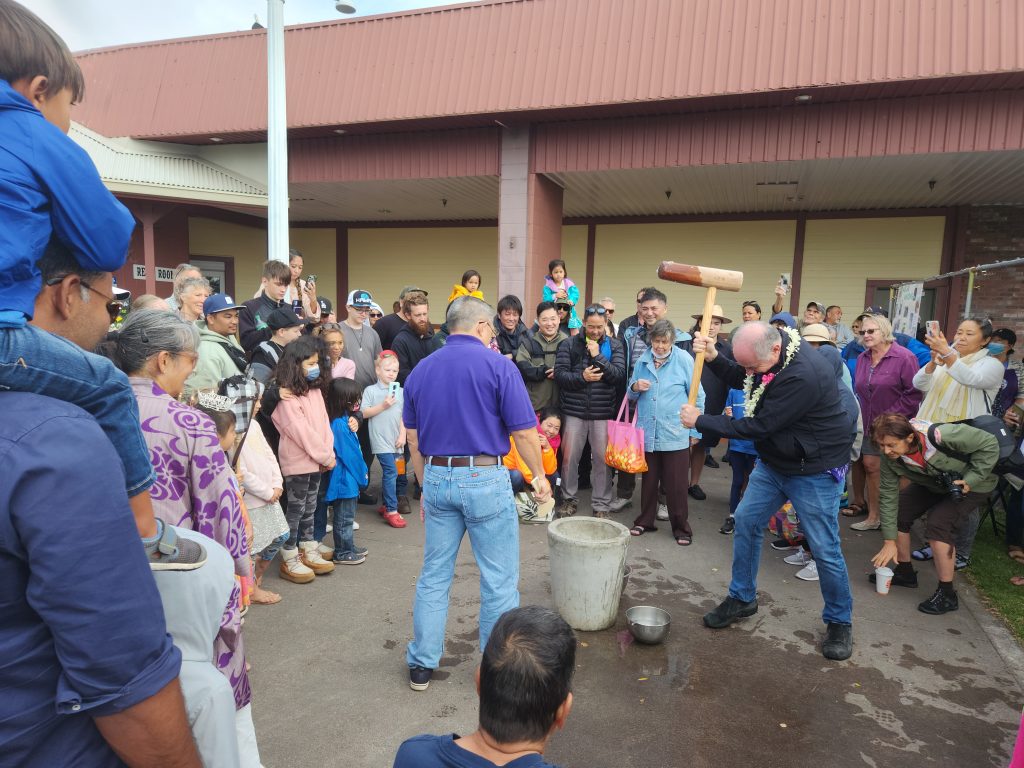
At an indoor venue later in the day, keiki made folded-paper origami masterpieces and then busted a move during a bon dance, a style of dancing usually performed during Obon, the annual Buddhist event that honors one’s ancestors. They excitedly learned the steps and participated in the dance circle, flashing giant smiles.
Back at Church Row Park, a bonsai tree exhibit and sales by members of the Waimea Bon-yu Kai Bonsai Club had a man visiting from Montana who was perusing the plants in awe. He wondered if a bonsai tree would do well back at his home, where winter can get frigid. But he figured it probably would be OK since the tree would be inside where it is warm.
A woman also was amazed by the different types of tiny trees on display and available for purchase: “They’re so beautiful,” she said. One of the sellers reminded everyone that all sales were final — there would be “no tree-funds.”

Momo Chan, a shaggy bright blue lion-dog with a red stripe down her back and bright white teeth that made an audible “clack” when they chomped, danced to the delight of a large crowd watching at the entertainment area on the park’s greenspace.
Keiki to kūpuna were enthralled as the pony-sized lion-dog (brought to life by the two people inside the costume) mimicked the movements of a dog and lion, even rolling over onto her back a couple of times, almost as if she was asking for a belly rub, and standing up on her hind legs at others during her performance.
The 8-year-old lion-pup was adopted and brought to Hawai‘i by Ryukyukoku Matsuri Daiko Kohala-Waimea, a chapter of the Okinawan Eisā taiko ensemble, which provided the beat for her show. Taiko are a broad range of Japanese percussion instruments, but outside Japan they are any of the various Japanese drums called wadaiko that form ensembles of taiko drumming, or kumi-daiko.
Drummers put on their own display as Momo Chan played, some showing off poses reminiscent of Japanese anime heroes as the booming and steady rhythm of their instruments informed the lion-dog’s moves. A few kids hesitated and ran back to their parents, not quite sure if they wanted to get too close. Others were happy to feed her a dollar and give her a pet after the dance, hoping to garner good fortune with their donations.
“What a beautiful exchange of culture,” the announcer said. “Arigatō.”
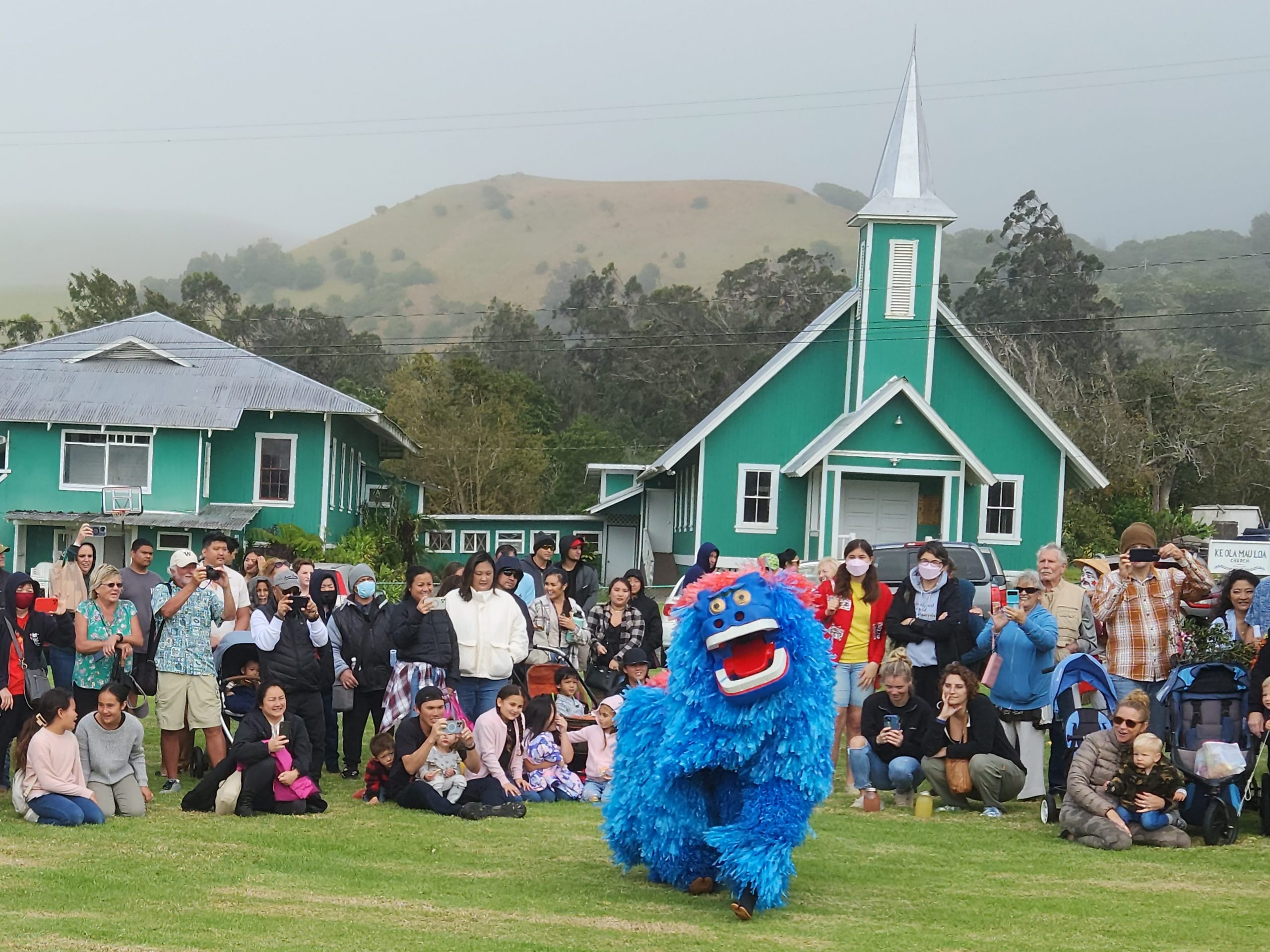
While lines of people waited outside Starbucks at the Parker Ranch Center to get their hands on coffee or tea, a traditional Japanese tea ceremony unfolded at Kamuela Hongwanji near Church Row Park. The ceremony takes the simple task of preparing tea for a guest and elevates it to an art form, with every movement intentional and performed in strict order, from folding a napkin to actually brewing the matcha tea and serving it.
Even the pauses the woman clad in a sky-blue kimono, a traditional Japanese garment and the national dress of Japan, took between each step were meaningful as she demonstrated the art to a more intimate quiet crowd.
On the other side of the room, people could carve their own vegetables or fruits and learn how to do charcuterie. Through an accordion divider, another audience watched as chefs demonstrated their skills, offering free samples of a prawn and seafood rice dish they were cooking up. The heavenly smell didn’t just make your mouth water, it tempted your taste buds while you were serenaded by the Japanese music playing through speakers outside.
It smelled so good, I kicked myself in the butt later for not getting in line for a sample, especially after taking a close-up look at the delicacy before my friend devoured it.
Oh, the food. From Hawaiian plates and BBQ to andagi, popular sweet deep-fried buns of dough similar to doughnuts, there were so many delicious menu options it was hard to decide what to eat.
“They got laulau,” one festival-goer announced about one of the Hawaiian food vendors at Church Row Park. Another woman working at a vendor said: “Everybody! We got seared ahi.”
There were desserts, too, including mini doughnuts, shave ice and cotton candy. Grinding was definitely part of the festival agenda as it seemed like no matter where you looked, people had food in their hands — or in their mouths.
A plethora of products also were being sold by vendors under tents in the parking lot behind the Parker Ranch Center, including Aloha Bubbles: “Whoa! That was the biggest bubble I’ve ever seen!” exclaimed a boy testing out the merchandise as a super-sized soapy sphere took shape and floated away from him. Information booths and demonstrations were also at the Waimea mall.
Additional images from the 30th anniversary Waimea Cherry Blossom Heritage Festival. Photos by Nathan Christophel/Big Island Now.
My friends and I tried, but we couldn’t pack in sake tasting, the Cherry Blossom Art Show, the Chess Fair on a giant 20-foot chess board, the all ages cherry blossom “Tiny Art” and more. Next year, I’m going to make it to everything.
But the festival is about more than the food, events, demonstrations and other activities. It even transcends the cherry blossoms.
Nancy Male, secretary of the Waimea Bon-yu Kai Bonsai Club, told me last week that her best memories of the festival are the feelings it invokes. I couldn’t agree more. It definitely lived up to the hype and was an experience that was more than I could have ever expected.
The happiness and joy of the masses as they reveled in the festivities were impossible to miss. It wrapped you in a warmth of community and tradition that made you impervious to Mother Nature’s throes and had you beaming from ear to ear.
I couldn’t have asked for a better first time at the Waimea Cherry Blossom Heritage Festival, and I can’t wait to see what the next 30 have in store.




